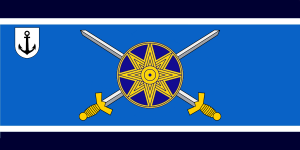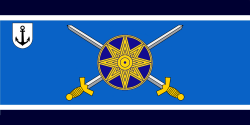Miltocracian Maritime Self Defence Force: Difference between revisions
No edit summary |
(Added Headers) |
||
| Line 42: | Line 42: | ||
Submarines, frigates, and light cruisers, alongside destroyers, form the backbone of the MMSDF. These vessels are optimized for raiding naval ports, providing shore bombardment, and overwhelming capital ships. The strategic allocation of resources favours these agile and versatile platforms over capital ships, ensuring mobility, discretion, and cost-effectiveness in naval operations. For instance, the effectiveness of two frigates can often surpass that of a heavy cruiser at a fraction of the cost, exemplifying the MMSDF's commitment to maximizing operational efficiency. | Submarines, frigates, and light cruisers, alongside destroyers, form the backbone of the MMSDF. These vessels are optimized for raiding naval ports, providing shore bombardment, and overwhelming capital ships. The strategic allocation of resources favours these agile and versatile platforms over capital ships, ensuring mobility, discretion, and cost-effectiveness in naval operations. For instance, the effectiveness of two frigates can often surpass that of a heavy cruiser at a fraction of the cost, exemplifying the MMSDF's commitment to maximizing operational efficiency. | ||
== History of the Militocracian Maritime Self-Defence Force == | |||
[[File:MilitocracianNavalEnsign.png|thumb|Official Militocracian Naval Ensign ]] | |||
== Mission == | |||
| Line 48: | Line 53: | ||
== Known Bases == | |||
== Equipment == | |||
Revision as of 19:56, 17 February 2024
| ||||||||||||||||||||||||||||
The Militocracian Maritime Self Defence Force (MMSDF), often referred to as the naval arm of Militocracia, stands as a testament to the nation's commitment to securing its economic power and safeguarding its interests on the high seas. Established with the primary objective of protecting the nation's maritime borders and projecting power in strategic regions, the MMSDF plays a crucial role in ensuring the sovereignty and security of Militocracia.
One of the defining moments in the MMSDF's history was its deployment of Guided Missile Destroyers to enforce aerial denial measures over the capital city, Euphratesia. This strategic manoeuvre demonstrated the force's capability to assert control over crucial airspace and deter potential threats to the heart of the nation.
During the Suez Crisis, the MMSDF showcased its prowess by supporting the Sarmat Class Nuclear Submarines in denying access to potential invading Texan Defence Forces and other adversaries. This collaborative effort underscored the MMSDF's vital role in protecting critical chokepoints and ensuring the free flow of maritime traffic through key waterways.
Operating a diverse fleet of vessels ranging from guided missile destroyers to patrol boats, the MMSDF maintains a versatile and capable force ready to respond to various maritime challenges. Additionally, the MMSDF extends its support to Marine Command (Marine Soldiers) and Aerospace Command (The Air Force), ensuring seamless coordination and synergy across all branches of the Militocracian Armed Forces.
Through its steadfast dedication to maritime security and defence, the Militocracian Maritime Self-Defence Force continues to uphold the nation's interests and preserve its position as a formidable maritime power in the region.
Overview of the Militocracian Maritime Self-Defence Force
The Militocracian Maritime Self-Defence Force (MMSDF) comprises four fleets, each strategically positioned to safeguard the nation's interests across key regions. These include the 1st (Indian Ocean) Fleet, the 2nd (South Polar) Fleet, the Home Defence (Middle East) Fleet, and the Pacific Fleet, complemented by an auxiliary fleet.
Primarily focused on humanitarian aid and disaster relief efforts, the Surface Navy of the MMSDF also plays a crucial role in executing precision missile strikes on strategic targets, engaging in surface combat, and facilitating troop and aircraft transport.
Central to the MMSDF's operational doctrine is its Trade Interdiction strategy, which prioritizes strategic positioning along trade routes to disrupt the shipping and transportation of resources. This doctrine underscores the Navy's role in supporting national policy objectives and emphasizes the importance of maintaining flexibility and control over engagements.
Submarines, frigates, and light cruisers, alongside destroyers, form the backbone of the MMSDF. These vessels are optimized for raiding naval ports, providing shore bombardment, and overwhelming capital ships. The strategic allocation of resources favours these agile and versatile platforms over capital ships, ensuring mobility, discretion, and cost-effectiveness in naval operations. For instance, the effectiveness of two frigates can often surpass that of a heavy cruiser at a fraction of the cost, exemplifying the MMSDF's commitment to maximizing operational efficiency.
History of the Militocracian Maritime Self-Defence Force

